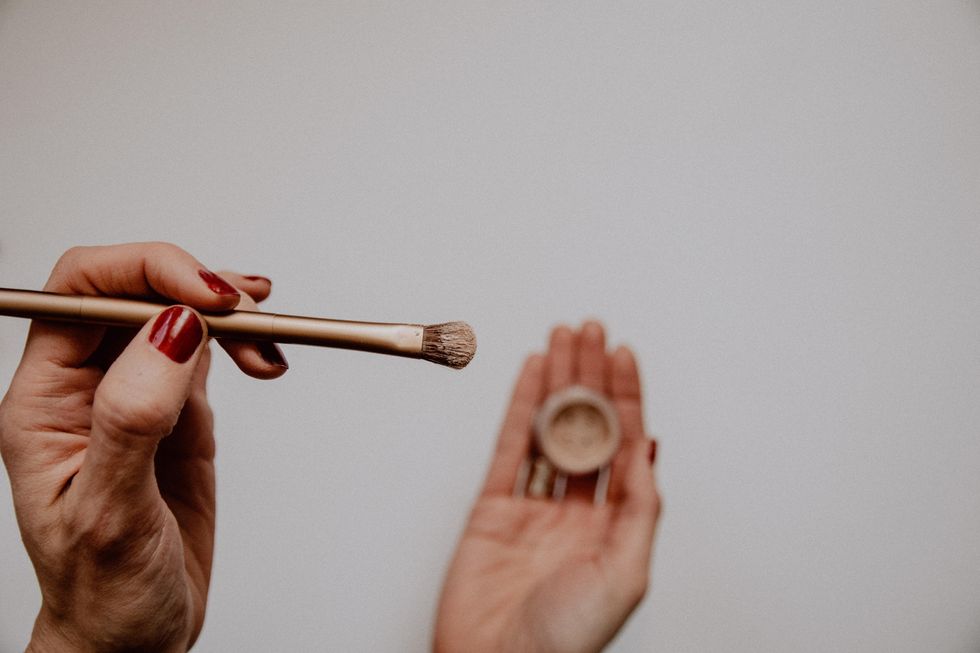Having beautiful skin is not just thanks to your genes; it can also be because of your lifestyle. What you do every day could very well be what keeps you from having that healthy glow you've been dreaming of.
However, the sheer number of opinions skincare experts offer might be too overwhelmingto be able to help you know what you should do.
So, instead of letting others tell you how to take care of your skin, you need to be the one to decide how to do it. Remember: Caring for your skin is a personal matter. Thus, you need a regimen that is specifically designed for you.
Below are five expert tips you can use when building your very own skin and face care routine:
1.Listen to your skin.
Proper skin care begins with identifying your skin type. You see, one-size-fits-all beauty products rarely work because each individual has unique needs that should be met with the right kind of solution.
To begin, use the following questions to pinpoint what type of skin you have:
●How much moisture does your skin contain? This ascertains its level of comfort and elasticity.
●How oily is it? This affects how soft to the touch your skin is.
●How sensitive is it? This helps determine the ingredients and substances you need to avoid.
Below are the different categories your skin may fall under:
Normal
Most people have this type of skin that embodies the "Goldilocks principle" of being just right: not too oily, not too dry. In other words, it has:
●Very few to no imperfections.
●Almost invisible pores.
●No severe sensitivity.
●A radiance in its complexion.
Combination Skin Type
As the name suggests, this skin type combines two different skin types in one individual.
It can be normal or dry in some places and oily in others. Most of the time, the oily part is the T-zone, which covers the forehead, nose, and chin.
People with combination skin may require varying care in some regions of their face.
Some of the signs to watch out for to know if you have this type of skin are:
●Bigger-than-normal pores that are more open.
●The presence of blackheads along the nose area.
●Shiny skin.
Dry Skin
Dry skin is primarily characterized by:
●Almost invisible pores.
●Rough or dull complexion.
●Red patches.
●Tighter skin, but because it is less elastic rather than supple.
●More visible lines.
Dry skin also tends to peel, crack, or become irritated or itchy. In some cases, it gets inflamed, too. Those with very dry skin can also have a scaly and rough texture in their arms, hands, and legs.
Oily Skin
Your skin can be categorized as oily if you have:
●Shiny or dull skin with a thick complexion.
●Enlarged pores.
●Pimples, blackheads, or other blemishes.
The level of oiliness in the skin may also change according to the season of the year or weather. It can also be affected by:
●Your stress levels.
●Puberty and other hormonal imbalances.
●Humidity or heat.
Sensitive Skin
Sensitivity in your skin can show up in the form of:
●Itching
●Redness
●Burning
●Dryness
If you have sensitive skin, make sure you figure out what triggers irritation so you can avoid them. Often, this includes ingredients contained in certain skincare products.
2.Always follow the three-step rule: cleanse, tone, and moisturize.
When building your skincare regimen, you need to keep in mind the three most important steps:
●Cleansing – which basically means washing your face.
●Toning – balancing the skin.
●Moisturizing — replenishing moisture that softens the skin.
Although they may be different, all skincare routines have one common goal: to tune up your skin and keep it at its best possible state.
Of course, a beauty regimen also serves as an excellent opportunity to see changes in yourself. This is why you need to adjust your skincare according to the changes you see in your body as the years pass.
3.Give your skincare products time to take effect.
One of the most common mistakes in finding a skincare regimen that works is failing to wait for the products to work.
Remember that there's no instant fix, despite how advanced skincare science has become. You still need time to see the results.
Plus, you'll only reap the benefits of a skincare product if you consistently use it. While it varies from one product to the next, a good estimate would be at least six weeks of use, either once or twice a day.
4.Know the right method, timing, and frequency of use.
Besides identifying the right product, you also need to determine the proper method, timing, and frequency of using it.
In most cases, the correct way of using a product is indicated on the label of the product you bought. Follow this. Try to steer clear of products that don't have any of these instructions.
The timing and frequency of use will also depend on the product. Some brands also include this in the instructions, but if they don't, you can follow these guidelines:
Cleansers
Cleansing needs to be done at least once in the morning and once before bedtime. This helps prevent acne breakouts and ensures that your pores are not clogged.
However, be careful not to overdo it. Observe how your skin reacts to the frequency of your cleansing ritual because cleansing too much can irritate your skin.
Toners
Use toners after cleansing. Immediately after the cleansers remove any unwanted elements from your skin is the perfect time to balance your skin's pH level and improve your skin tone.
Moisturizers
Moisturizers should be applied once every morning and evening after toning. It should be the last step in skincare before makeup is applied.
Pro Tip: If you're using other products in between facial cleansers, toners, and moisturizers, you can determine when to use them according to their consistency. Start with thinner products, going thicker as you end your skincare routine.
5.Don't forget your sunscreen.
Many women don't include sunscreen in their beauty regimen. So, what's the big deal?
Actually, applying sunscreen is the most important step of any skincare routine. In fact, experts say that not wearing sunscreen can cause all the efforts you've put into your skincare to go to waste.
If your moisturizer doesn't have any sun protection factor (SPF), always apply sunscreen before heading out. This will protect you from various issues, ranging from premature skin aging to skin cancer.
If you're using a chemical sunscreen, always apply it at least 20 minutes before you go out. Go with products with broad-spectrum SPF as it shields you from UVA and UVB radiation.
Remember: Protecting against UV rays isn't limited to the outdoors. You also need to protect your skin even when you spend your days inside, as the radiation can still enter through the windows.
Take Care of Your Skin
Taking care of your own skin isn't hard. You just need to know your needs, follow the correct phases of skincare, and allow time for the products you use to work their magic.











